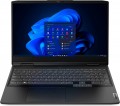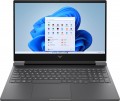Screen size
Diagonal size of laptop display.
The larger the screen, the more convenient the laptop for watching high-definition movies, modern games, working with large-format graphic materials, etc. Large screens are especially important for multimedia and gaming models. On the other hand, the diagonal of the display directly affects the size and cost of the entire device. So if portability is key, it makes sense to pay attention to relatively small solutions; especially since most modern laptops have video outputs like HDMI or DisplayPort and allow connection of large-format external monitors.
In light of all this, the actual maximum for laptops these days is
17"(17.3"); however
larger devices (18") reappeared at the beginning of 2023. The standard option for general purpose laptops is
15"(15.6"), less often
16", a diagonal of
13"(13.3") or
14" is considered small by the standards of such And smaller screens can be found mainly in specific compact varieties of laptops — ultrabooks, 2 in 1, transformers, netbooks; among such devices there are solutions for
12 ",
11" and even
10" or less.
Surface treatment
—
Glossy. A glossy surface improves the overall picture quality: other things being equal, the picture on such a screen looks brighter and more colorful than on a matte one. On the other hand, pollution is very noticeable on such a surface, and in bright external lighting, a lot of glare appears on it, which can greatly interfere with viewing. Therefore, instead of the classic gloss, laptops are increasingly using an anti-reflective version of such a coating (see below). Nevertheless, this option still does not lose popularity: it is somewhat cheaper than the “anti-glare”, and in soft, relatively dim lighting, it can even provide a more pleasing image to the eye.
—
Matte. Matte finish is inexpensive and does not form glare even from fairly bright lighting. On the other hand, the picture on such a screen is noticeably dimmer than on a similar glossy display. However, this moment can be compensated by various design solutions (primarily a good margin of brightness); so this option can be found in all categories of modern laptops — from low-cost models for working with documents to top gaming configurations.
—
Glossy (anti-glare). A variation on the glossy finish described above, designed to reduce glare from external light sources. Such screens really glare noticeably less than traditional glossy ones (or even do not give glare at all); at the same time, in
...terms of image quality, they are at least superior to matte ones. So it is this type of coating that is most popular nowadays.Response time
Screen response time to a control signal — in other words, the time between the receipt of such a signal on the matrix and the switching of pixels to a given mode.
Theoretically, the lower the response time, the better the screen handles with dynamic scenes, the higher the frame rate on it can be achieved. At the same time, it is worth noting that almost all modern matrices have sufficient response speed to effectively process the classic frame rate of 60 Hz — and, recall, it is quite enough for most cases. So paying attention to this parameter makes sense, first of all, if you are purchasing an advanced gaming model, the screen of which operates at a frame rate of more than 60 Hz. In other cases, the response time is often not indicated at all.
Refresh rate
The frame rate supported by the laptop screen. In fact, in this case we are talking about the maximum frequency; the actual frame rate may be lower than this value, depending on the content being displayed — but not higher.
Theoretically, the higher the frame rate, the smoother the movement on the screen will look, the less moving objects will be blurred. In fact, the situation is such that even in relatively modest modern laptops,
60 Hz matrices are installed — in general, this is quite enough for the human eye, since a further increase in speed (
90 Hz and higher) does not significantly improve the visible “picture”. However, in high-end gaming and multimedia models designed for demanding users, higher values —
120 Hz,
144 Hz,
165 Hz and even
higher, namely
240 Hz and
300 Hz.
Brightness
The maximum brightness that a laptop screen can provide.
The brighter the ambient light, the brighter the laptop screen should be, otherwise the image on it may be difficult to read. And vice versa: in dim ambient light, high brightness is unnecessary — it greatly burdens the eyes (however, in this case, modern laptops provide brightness control). Thus, the higher this indicator, the more versatile the screen is, the wider the range of conditions in which it can be effectively used. The downside of these benefits is an increase in price and energy consumption.
As for specific values, many modern laptops have a brightness of
250 – 300 nt and even
lower. This is quite enough for working under artificial lighting of medium intensity, but in bright natural light, visibility may already be a problem. For use in sunny weather (especially outdoors), it is desirable to have a brightness margin of at least
300 – 350 nt. And in the most advanced models, this parameter can be
350 – 400 nt and even
more.
Contrast
The contrast of the screen installed in the laptop.
Contrast is the largest difference in brightness between the lightest white and darkest black that can be achieved on a single screen. It is written as a fraction, for example, 560:1; while the larger the first number, the higher the contrast, the more advanced the screen is and the better the image quality can be achieved on it. This is especially noticeable with large differences in brightness within a single frame: with low contrast, individual details located in the darkest or brightest parts of the picture may be lost, increasing the contrast allows you to eliminate this phenomenon to a certain extent. The flip side of these benefits is an increase in cost.
Separately, we emphasize that in this case only static contrast is indicated — the difference provided within one frame in normal operation, at constant brightness and without the use of special technologies. For advertising purposes, some manufacturers may also provide data on the so-called dynamic contrast — it can be measured in very impressive numbers (seven-digit or more). However, you should focus primarily on static contrast — this is the basic characteristic of any display.
As for specific values, even in the most advanced screens, this indicator does not exceed 2000: 1. But in general, modern laptops have a rather low contrast ratio — it is assumed that for tasks that require more advanced image characteristics, it is more...reasonable to use an external screen (monitor or TV).
Colour gamut (sRGB)
The colour gamut of the laptop matrix according to the Rec.709 colour model or according to sRGB.
Colour gamut describes the range of colours that can be displayed on the screen. It is indicated as a percentage, but not relative to the entire variety of visible colours, but relative to the conditional colour space (colour model). This is due to the fact that no modern screen is able to display all the colours visible to humans. However, the larger the colour gamut, the wider the screen's capabilities, the better its colour reproduction.
Specifically, sRGB and Rec.709 are the most popular of today's colour models; they have the same range and differ only in the scope (sRGB is used in computers, Rec. 709 is used in HDTV). Therefore, the closer
the colour gamut is to 100%, the more accurately the colours on the screen will match the colours that were originally intended by the creator of the film, game, etc. At the same time, note that such accuracy is not particularly needed in everyday use — it critical only for professional work with colour; and even in such cases, it is more convenient to buy a separate monitor with a wide colour gamut for a laptop, rather than looking for a laptop with a high-quality (and, accordingly, expensive) matrix.
Colour gamut (NTSC)
The colour gamut of the laptop matrix according to the NTSC colour model.
Colour gamut describes the range of colours that can be displayed on the screen. It is indicated as a percentage, but not relative to the entire variety of visible colours, but relative to the conditional colour space (colour model). This is due to the fact that no modern screen is able to display all the colours visible to humans. However, the larger the colour gamut, the wider the screen's capabilities, the better its colour reproduction.
Specifically, NTSC is one of the first colour models created back in 1953 for colour television. It is not used in the production of modern LCD matrices, but is used to describe and compare them. NTSC covers a wider range of colours than sRGB, which is standard in computer technology; therefore, even a small number of percentages in this case corresponds to a fairly wide coverage. For example, a value of
72% or more in NTSC is already considered a good value for use in design and graphics. At the same time, the same NTSC figures on different screens may correspond to different sRGB figures; so if accurate colour reproduction is decisive for you, these details should be clarified before buying.
Also note that among individual monitors, it is easier to find a screen with a wide colour gamut; while it will also cost less than a laptop with similar display characteristics. So choosing a laptop with a h
...igh-end screen makes sense mainly when portability is as important to you as high-quality colour reproduction.AMD compatibility
The laptop supports
AMD FreeSync technology and its more advanced varieties (FreeSync Premium, FreeSync Premium Pro). Here are more details about them:
– AMD FreeSync. This function is found only in models equipped with discrete AMD graphics cards. It serves to match the frame rate of the screen and the frame rate of the incoming signal so that the frequencies match. This allows you to avoid flickering, jerking and other image defects that occur due to signal desynchronization. This function is especially useful for games where the frame rate of the video signal can “float” depending on the load on the graphics core; in fact, most laptops with FreeSync are specifically gaming laptops.
– AMD FreeSync Premium. An intermediate option between the core AMD FreeSync technology and the advanced FreeSync Premium Pro implementation. The Premium version does not have HDR support (unlike Pro), but it works at the same frame rate (at least 120 fps at a resolution of 1920x1080) and uses LFC low frame rate compensation technology.
– FreeSync Premium Pro. The most advanced version of FreeSync technology, formerly known as AMD FreeSync 2 HDR. As the original name suggests, one of the highlights of this edition is HDR support. FreeSync Premium Pro claims a frame rate of at least 120 fps at Full HD resolution, as well as a low frame rate compensation (LFC) function. According to the creators, FreeSync Premium Pro works espec
...ially well in games; and many modern games are initially created to work with this technology.
NVIDIA video cards use a similar technology called G-Sync.
